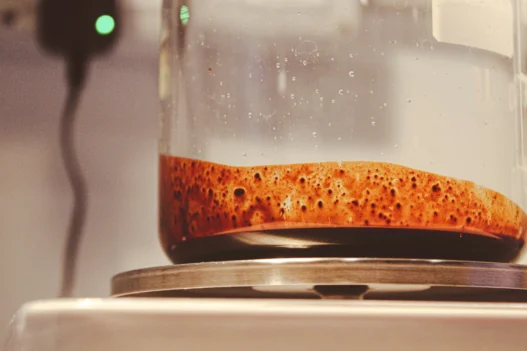1,4-Cyclohexanediol is a chemical compound that plays a significant role in various industries and everyday life. It is commonly used in the production of fragrances, pharmaceuticals, and polymers. In the fragrance industry, 1,4-Cyclohexanediol is utilized as a base compound for creating scents due to its pleasant aroma. In the pharmaceutical sector, it is used in the synthesis of certain drugs. Additionally, 1,4-Cyclohexanediol is a key ingredient in the manufacturing of polymers, which are essential in the production of various products such as plastics, adhesives, and coatings. Overall, the significance of 1,4-Cyclohexanediol lies in its versatile applications across different sectors, contributing to the enhancement of everyday products and substances utilized in modern society.
Table of Contents:
- 💡 Commercial Applications
- ⚗️ Chemical & Physical Properties
- 🏭 Production & Procurement
- ⚠️ Safety Considerations
- 🔬 Potential Research Directions
- 🧪 Related Compounds
💡 Commercial Applications
1,4-Cyclohexanediol, also known as cyclohexane-1,4-diol, has various commercial and industrial applications. One of its main uses is as a chemical intermediate in the production of fragrances, lubricants, and polymers. It is also utilized in the synthesis of pharmaceuticals and agricultural chemicals.
In the pharmaceutical industry, 1,4-Cyclohexanediol is commonly employed as a building block for the manufacturing of certain drugs and medications. Specifically, it is utilized in the production of antihistamines, cardiovascular drugs, and antifungal agents. Its chemical properties make it a valuable ingredient in these pharmaceutical applications.
Overall, 1,4-Cyclohexanediol plays a crucial role in both commercial and industrial settings. Its versatility as a chemical intermediate allows for its widespread use in various industries, ranging from fragrance production to pharmaceutical manufacturing. Its unique properties make it a valuable component in the creation of a wide array of products essential for daily life.
⚗️ Chemical & Physical Properties
1,4-Cyclohexanediol appears as a white crystalline solid with no distinct odor. Its physical appearance is similar to other common food items such as sugar or salt.
With a molar mass of 116.16 g/mol and density of 1.11 g/cm³, 1,4-Cyclohexanediol is comparable to the molar mass and density of certain sweeteners such as sucrose (table sugar) and fructose.
1,4-Cyclohexanediol has a melting point of 66-68°C and a boiling point of 143-145°C. These physical properties are comparable to some common food items such as butter or coconut oil in terms of their melting and boiling points.
1,4-Cyclohexanediol is slightly soluble in water and has a moderate viscosity. This solubility and viscosity are similar to substances like honey or maple syrup, which are also partially soluble in water and exhibit a certain level of viscosity.
🏭 Production & Procurement
1,4-Cyclohexanediol is produced through the reduction of 1,4-Cyclohexanedione using hydrogen gas and a suitable catalyst, such as Raney nickel. This reduction reaction results in the conversion of the carbonyl groups in the 1,4-Cyclohexanedione to alcohol groups, yielding 1,4-Cyclohexanediol.
1,4-Cyclohexanediol can be procured from chemical suppliers that specialize in the distribution of fine chemicals and specialty compounds. It is typically stored and transported in sealed containers to prevent contamination and ensure product purity. The compound can be shipped using standard chemical transport methods, adhering to all safety regulations and guidelines.
Upon procurement, 1,4-Cyclohexanediol should be handled with care to avoid exposure to moisture and air, as it is sensitive to oxidation. Proper storage in a cool, dry place away from direct sunlight is recommended to maintain the stability of the compound. Transportation of 1,4-Cyclohexanediol should be done in compliance with hazardous material regulations to ensure safety during transit.
⚠️ Safety Considerations
Safety Considerations for 1,4-Cyclohexanediol:
When handling 1,4-Cyclohexanediol, it is important to be aware of its potential hazards. This compound may be harmful if swallowed, inhaled, or absorbed through the skin. It can cause irritation to the respiratory system, skin, and eyes. In addition, prolonged or repeated exposure to 1,4-Cyclohexanediol may result in serious health effects.
It is essential to take appropriate safety precautions when working with 1,4-Cyclohexanediol to minimize the risk of exposure. This includes wearing protective clothing, gloves, and eye protection. It is also important to work in a well-ventilated area to prevent inhalation of vapors. In case of accidental exposure, it is crucial to seek medical attention immediately. Additionally, proper disposal methods should be followed to avoid environmental contamination.
🔬 Potential Research Directions
One potential research direction for 1,4-Cyclohexanediol is its utilization as a building block for the synthesis of novel polymers. By incorporating this diol into polymer chains, researchers can explore the resulting material’s properties and applications.
Another avenue for research could involve investigating the potential biological activities of 1,4-Cyclohexanediol. Studies could focus on its interaction with enzymes or receptors in biological systems, potentially leading to the discovery of new therapeutic agents or drug candidates.
Furthermore, researchers may explore the environmental impact of 1,4-Cyclohexanediol and its degradation products. Understanding the compound’s fate in the environment, as well as its potential toxicity to living organisms, could inform decisions on its production and use in various industries.
🧪 Related Compounds
One similar compound to 1,4-Cyclohexanediol is 1,3-Cyclohexanediol. This compound has a similar molecular structure, with two hydroxyl groups attached to adjacent carbon atoms in a cyclohexane ring. The difference lies in the positioning of the hydroxyl groups on the carbon atoms, resulting in different physical and chemical properties.
Another compound that bears resemblance to 1,4-Cyclohexanediol is 1,2-Cyclohexanediol. Like its 1,4 isomer, this compound contains two hydroxyl groups attached to a cyclohexane ring. However, in this case, the hydroxyl groups are positioned on carbon atoms that are one carbon apart from each other. This subtle difference in structure can lead to distinct reactivity and solubility properties.
A further compound worth mentioning is 1,4-Cyclohexanedione. While not a diol like 1,4-Cyclohexanediol, this compound shares the cyclohexane ring structure and the presence of functional groups at the 1 and 4 positions. Instead of hydroxyl groups, 1,4-Cyclohexanedione features ketone functionalities at these positions, resulting in different chemical behavior and reactivity compared to 1,4-Cyclohexanediol.









